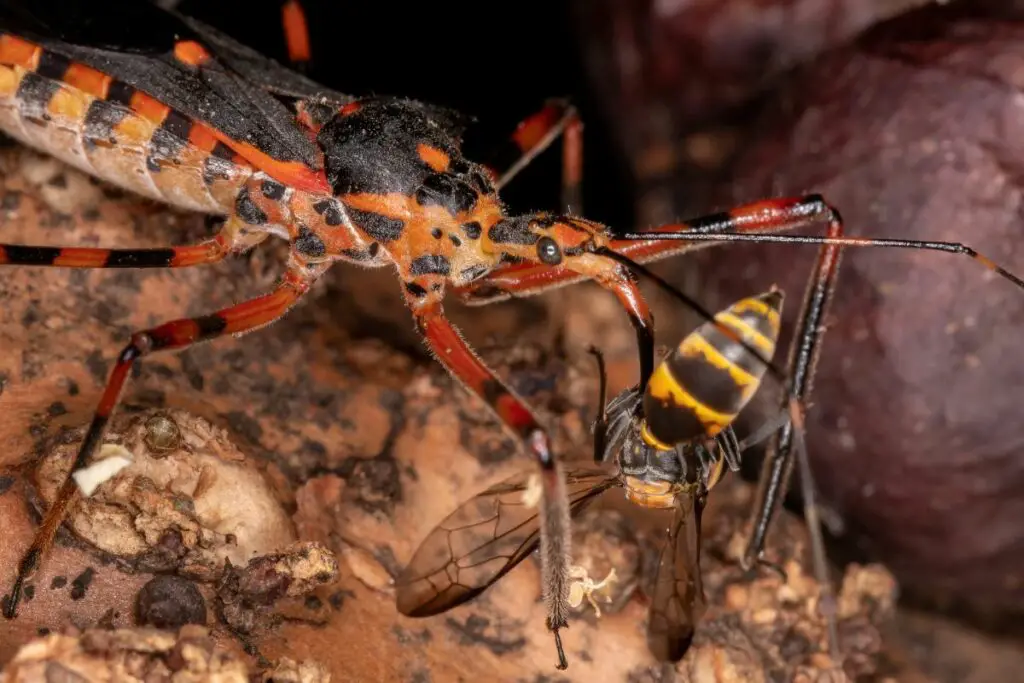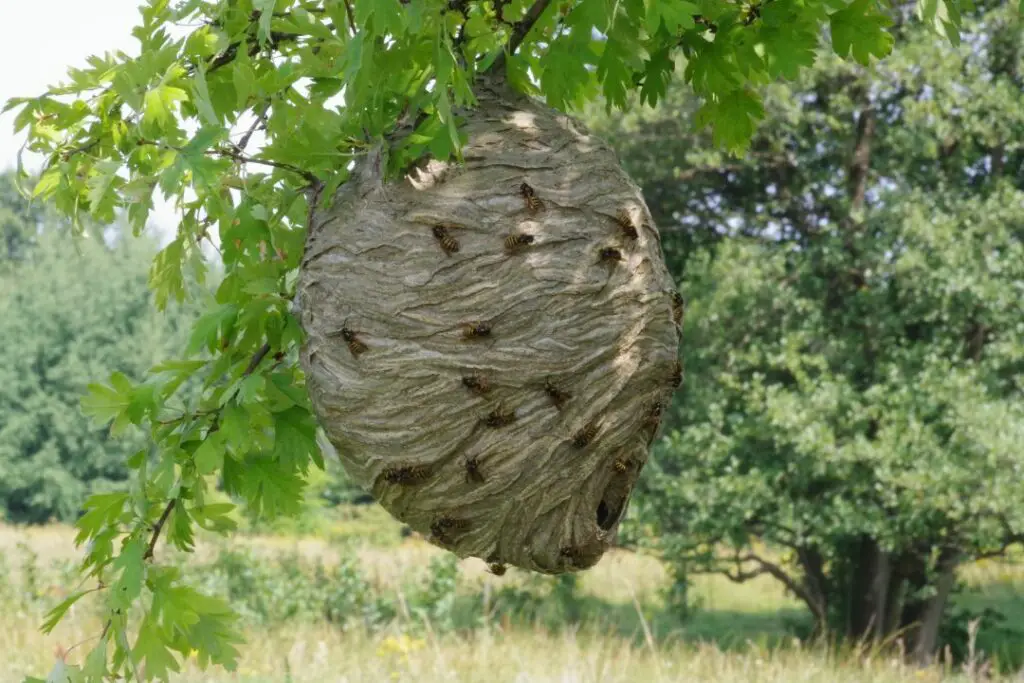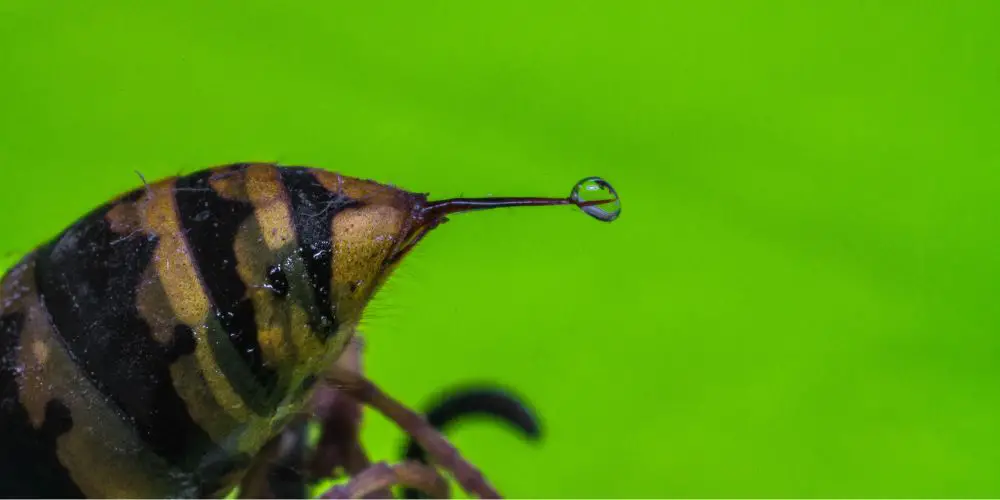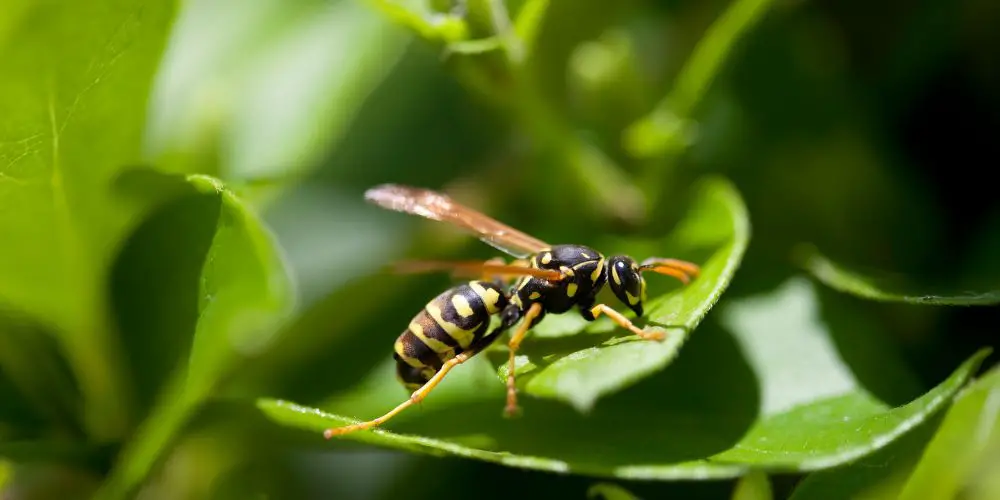Wasps have a whole host of other animals to watch out for, including:
- Birds
- Reptiles and amphibians
- Insects and arachnids
- Mammals
- Other wasps and bees
Now, we’ve met the animals that kill and eat wasps. Let’s jump into the wild to discover how wasp predators operate.
*More reading – When do wasps leave their nest?
Birds
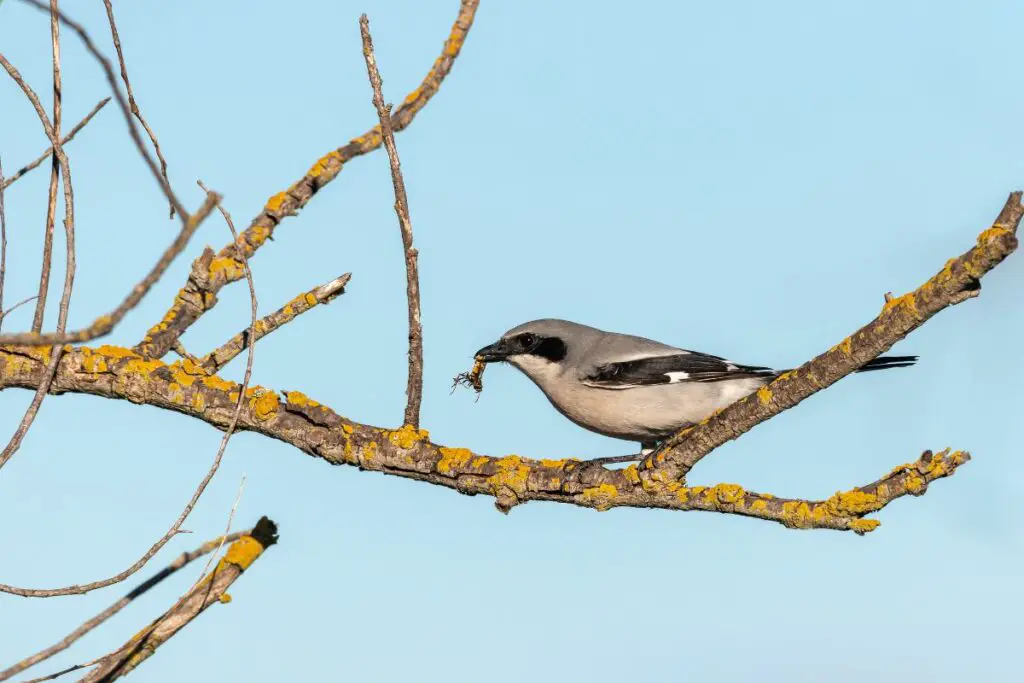
Birds are probably the most prolific wasp hunters on this list.
They combine fantastic eyesight with lightning-quick reflexes to pick wasps out of the air.
These aerial acrobats are a wasp’s worst nightmare, and several species have developed special hunting techniques.
These are just a few of the wasp-killing birds you’ll find in the wild:
- Starlings
- Blackbirds
- European Bee-eaters
- Chickadees
- Sparrows
Starlings
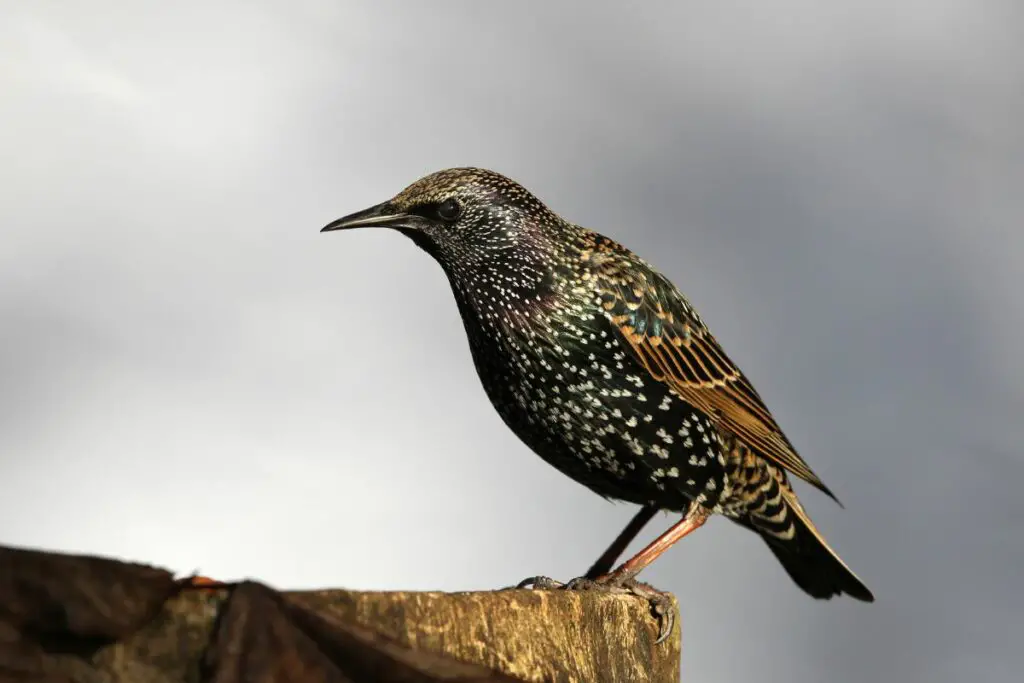
They typically target wasps in flight, using agile flying skills and sharp beaks to snatch them mid-air.
Once captured, they can remove the stinger by rubbing the wasp against a hard surface, neutralizing the threat of being stung.
Blackbirds
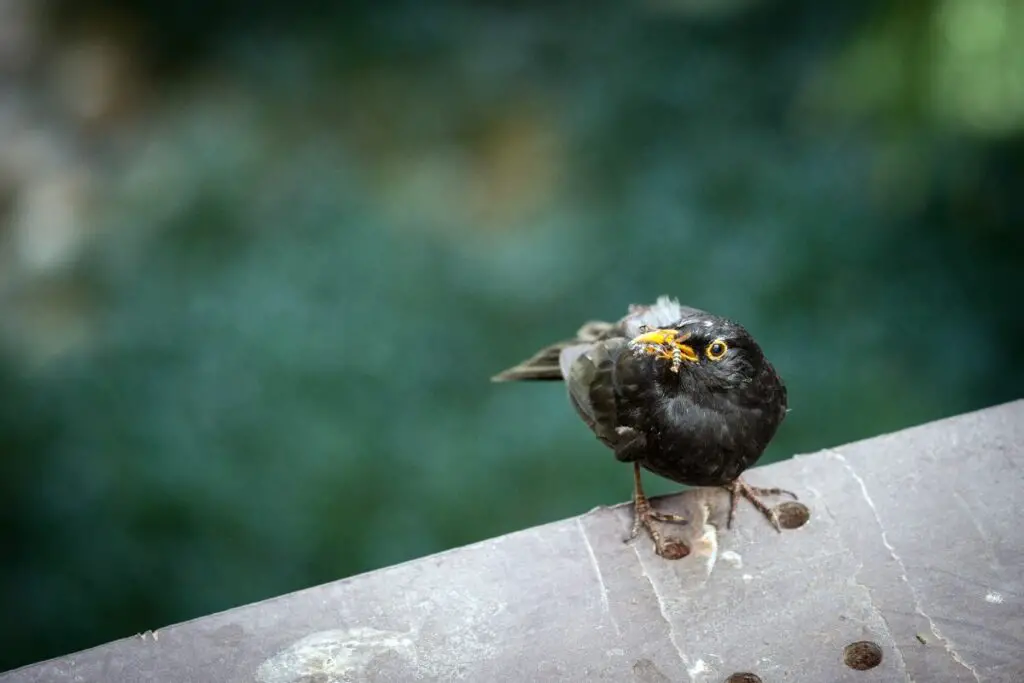
Blackbirds hunt wasps in a more grounded manner compared to the acrobatic starlings.
They forage on the ground or in low vegetation, spotting and crushing wasps using their strong beaks.
Reptiles and amphibians
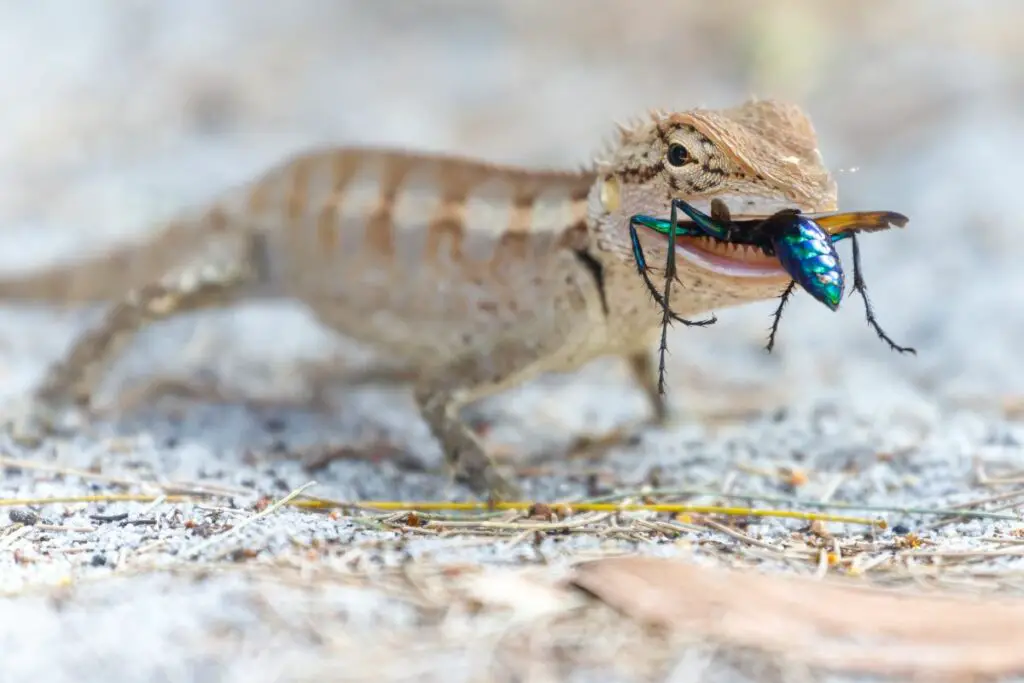
Cold-blooded creatures that rely on ambush tactics to take down their prey.
They wait motionless, blending into their surroundings until a wasp reaches striking range.
With a fast, precise strike of their tongues or a quick snap of their jaws, it’s over in the blink of an eye.
These are some of the most prolific wasp ambushers:
- Frogs
- Lizards
- Geckos
Frogs
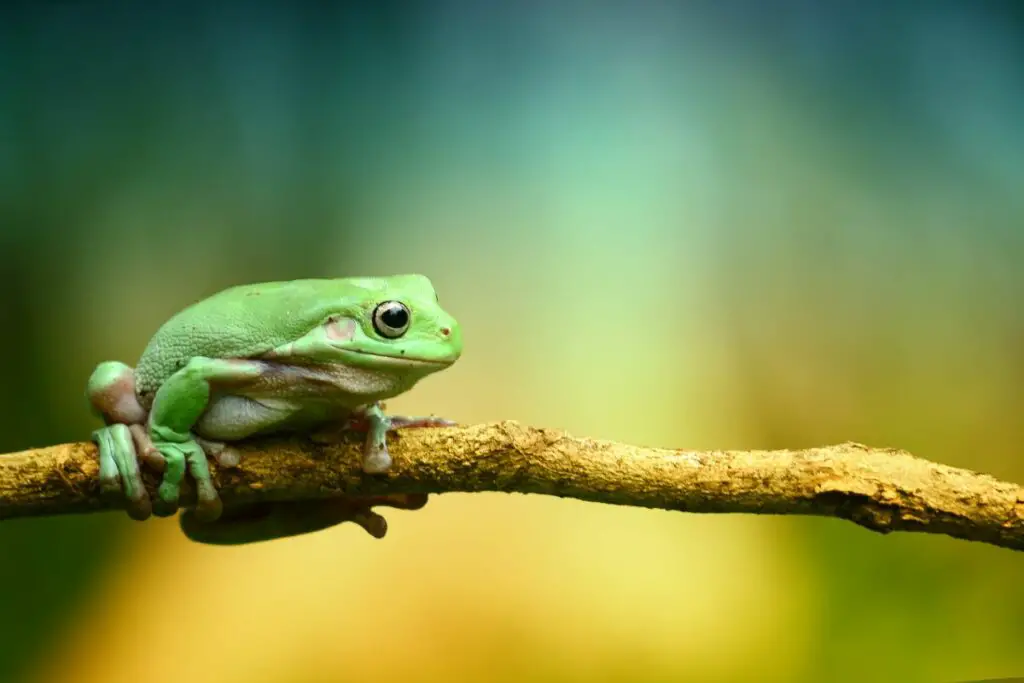
They patiently wait near flowers and areas with high wasp activity.
Their excellent camouflage helps them blend into their surroundings, making them virtually invisible to unsuspecting wasps.
When a wasp comes within reach, it’s all about speed and accuracy.
It shoots out its sticky whip-like tongue at lightning speed, snagging the wasp mid-air or from a nearby surface.
Lizards
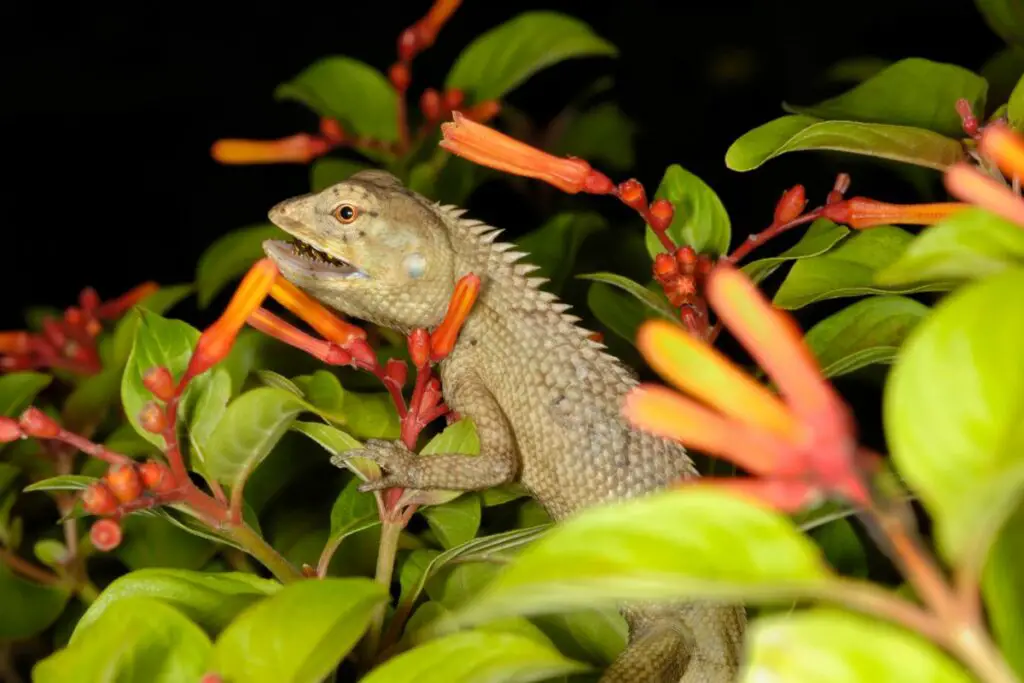
These reptiles rely on stealth and precision to hunt down wasps.
They can wait motionless hours, biding their time for the perfect moment to strike.
It lunges with a sudden burst of speed, using its quick reflexes and sharp jaws to despatch its victim before it can react and sting.
Insects & arachnids
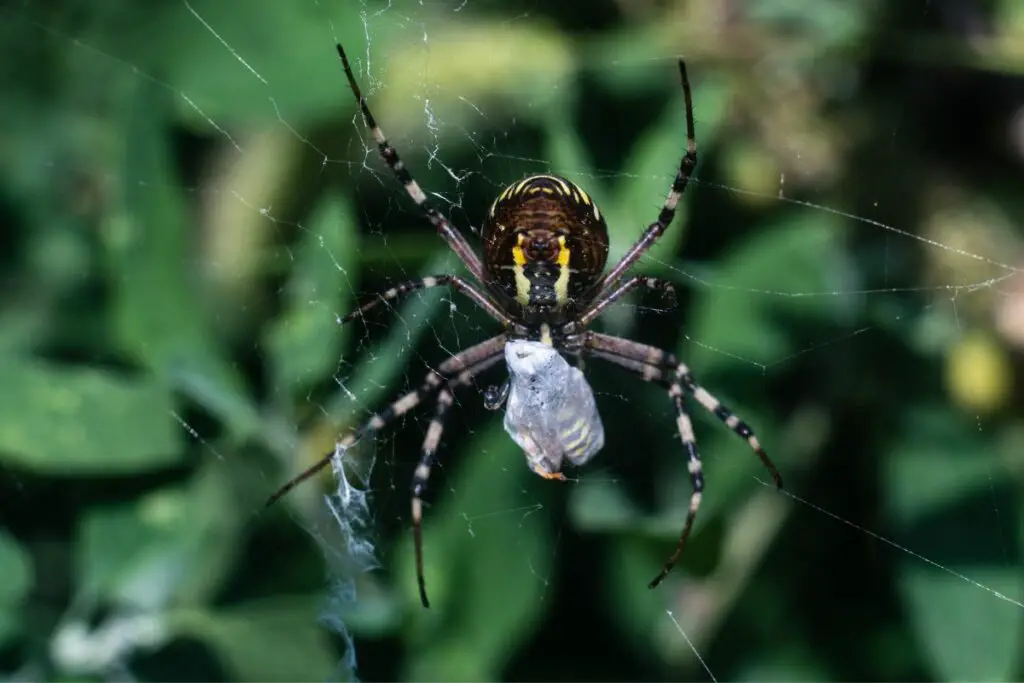
Easily the most alien group of animals on this list, insects and arachnids make for some truly terrifying wasp killers.
From spiders lying in wait in their webs to the juggernaut-sized dragonflies that stalk the skies, wasps have their work cut out.
Here are some of our favourites that have wasps well and truly on the menu:
- Praying Mantises
- Dragonflies
- Centipedes
- Spiders
Praying Mantises
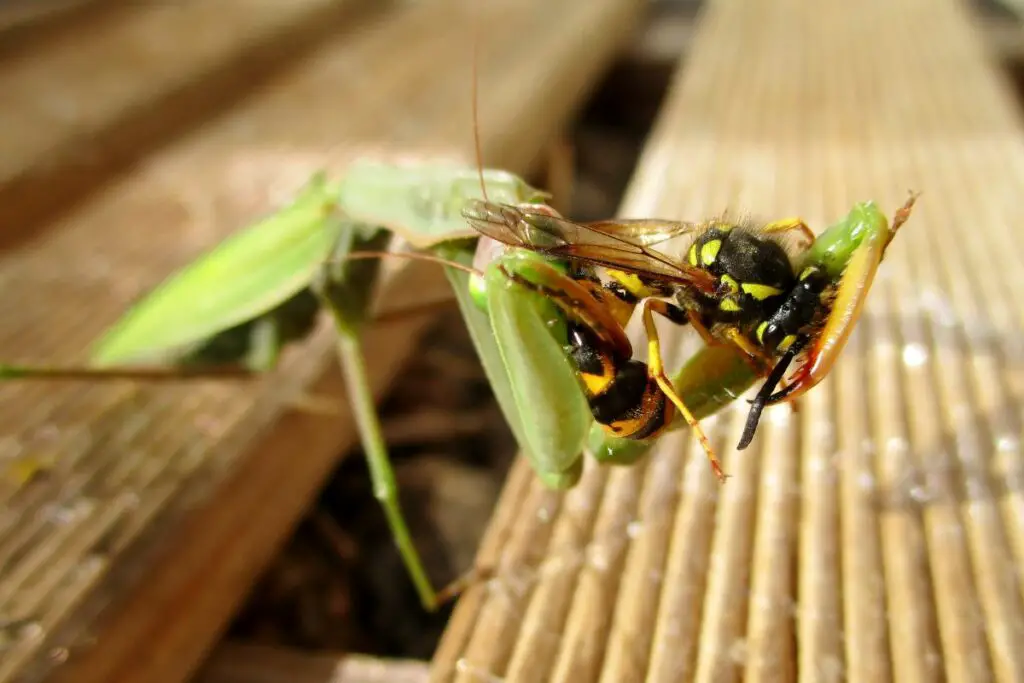
These grim reapers of the insect world are just as deadly for wasps as anything unfortunate enough to cross its path.
With serrated, razor-sharp forearms and powerful mandibles for tearing apart prey, this is an apex predator in the insect world.
It’s a genius in disguise and camouflage, blending in perfectly with the leaves surrounding it.
In one quick movement, it punches, disabling the wasps in its pincers and pointing the sting away from its body.
*Gruesome fact – When a praying mantis eats a wasp, they’ll start by sucking out its brains!
Dragonflies
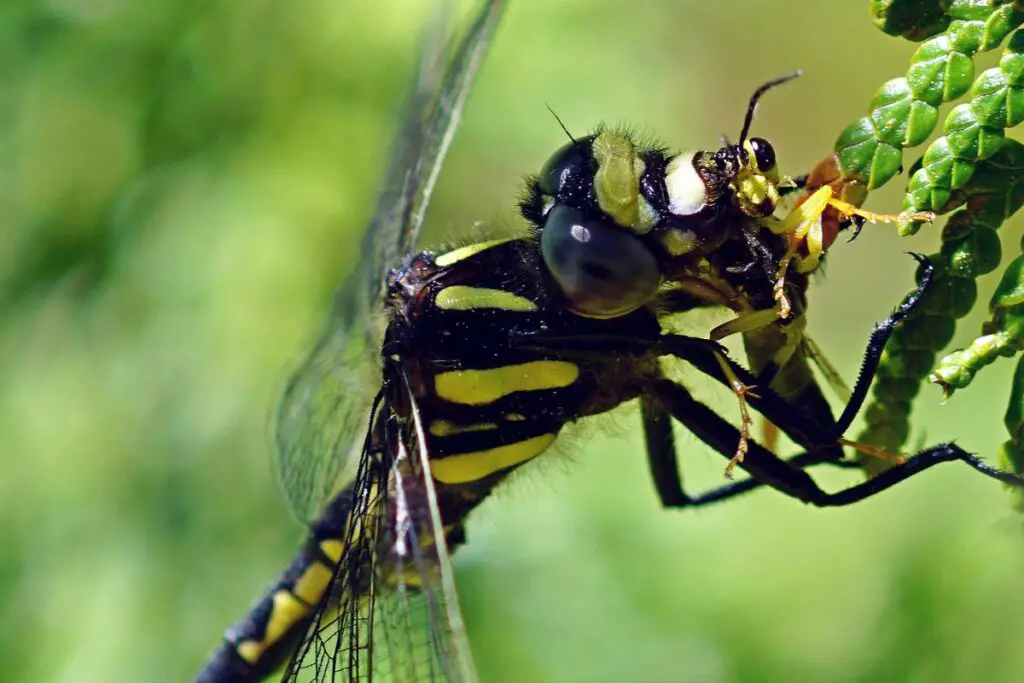
Dragonflies can hover, dive, and change direction with astonishing agility, and their large, multifaceted eyes give them a nearly 360-degree field of vision.
This makes them formidable aerial predators, picking off unsuspecting wasps that fly into their territory.
The difference in size gives the wasp little to no chance of survival, and powerful mandibles make for a quick meal.
Mammals
The biggest animals on this list threaten wasps in and out of their nests.
With powerful claws and a ravenous appetite, entire colonies of wasps can be wiped out in minutes.
Here are the three b’s when it comes to wasp-hunting mammals:
- Bears
- Bats
- Badgers
Bears
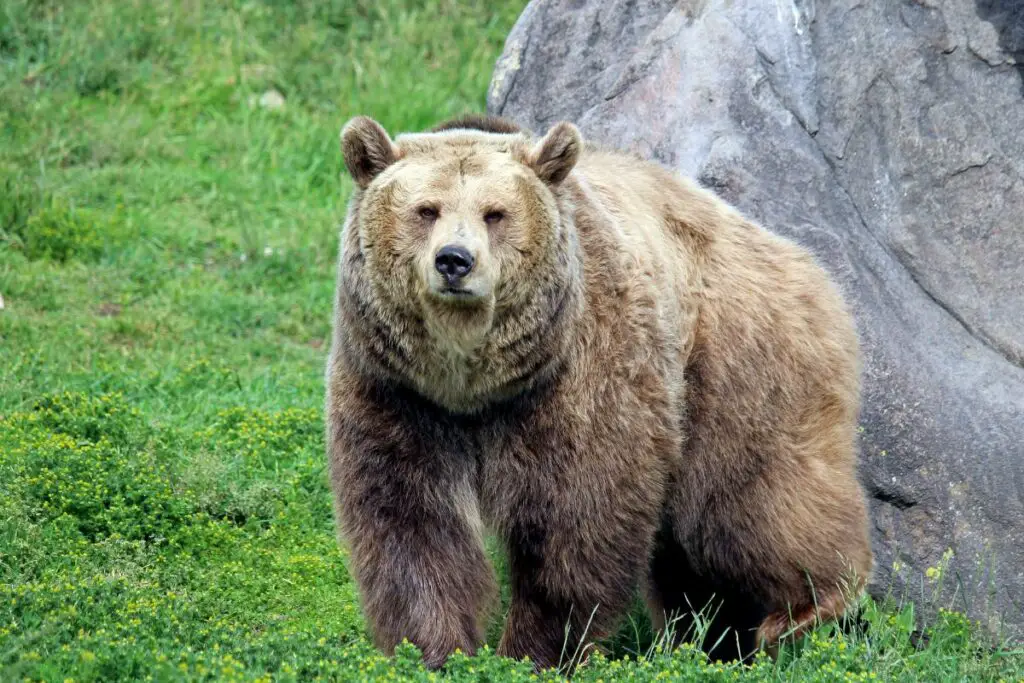
Bears target wasps for their protein-packed larvae.
Using their powerful sense of smell, they find nests in trees, underground caves and rock crevices.
Once locked onto a target, it uses its powerful paws and claws to tear it open despite the risk of multiple stings.
Thick fur and skin provide all the protection it needs against the wasp’s defence.
The bear quickly consumes anything from larvae to adult wasps when it breaks into the nest.
Bats
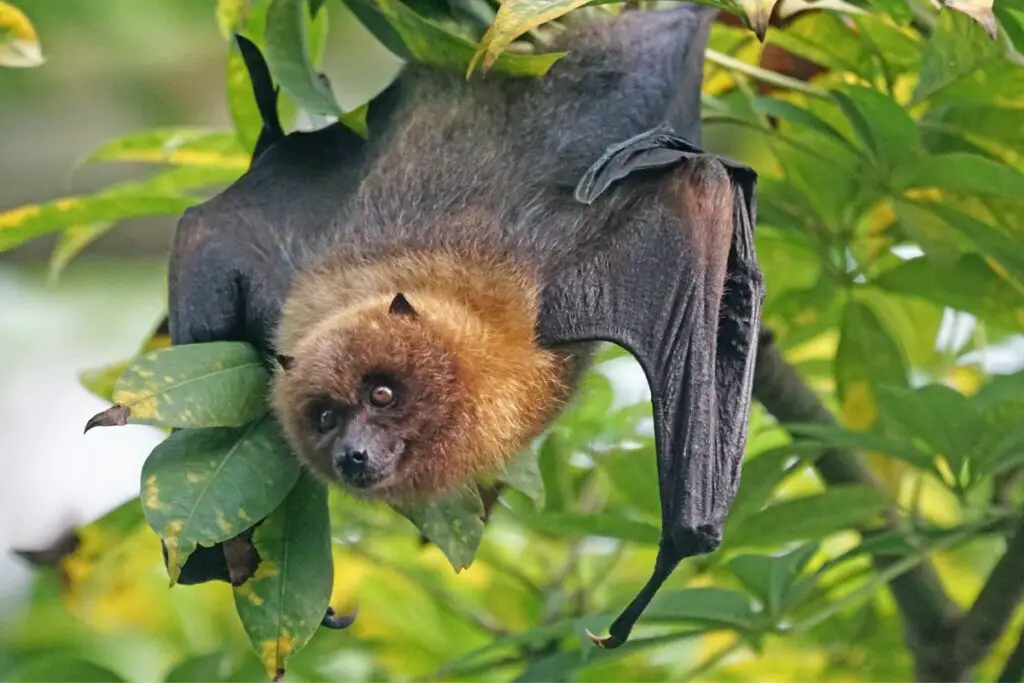
These are the masters of nocturnal hunting.
Equipped with echolocation (an extraordinary biological sonar system), it allows them to detect, track, and capture insects in complete darkness.
They emit echolocation calls and listen for the echoes bouncing off flying wasps.
Once they find an unsuspecting target, they snatch their prey out of the air using their mouth.
Other wasps & bees
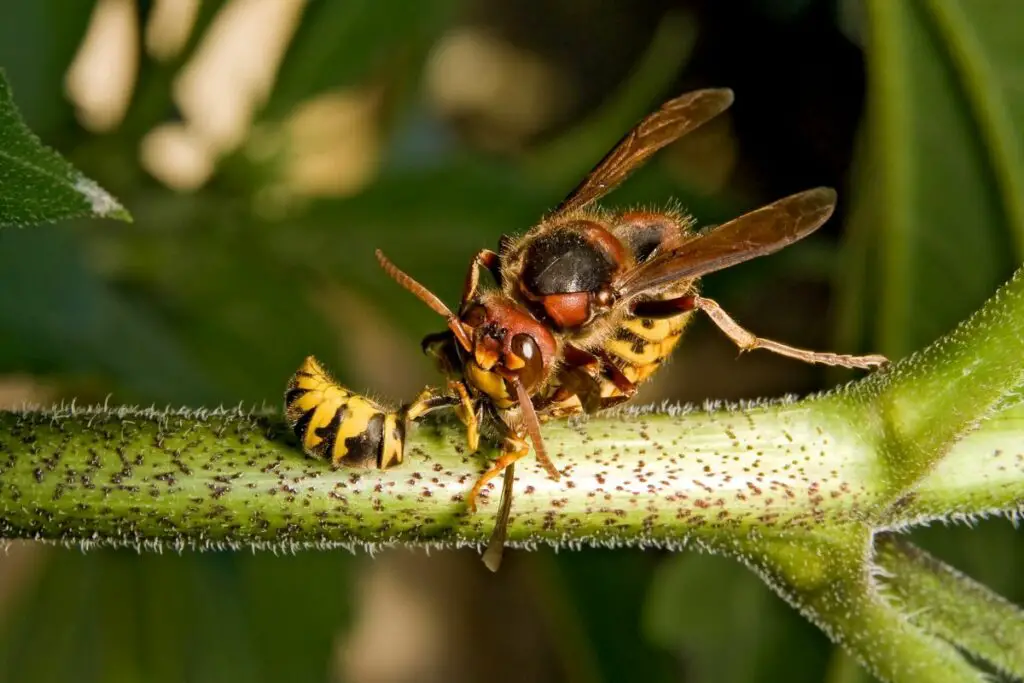
While they may not kill wasps to eat them, bees and others can and will fight to the death in certain circumstances.
Solitary wasps tend to keep to themselves, but social wasps like yellowjackets are a whole different story.
They’re fierce territorial, and if a wasp from another colony wanders too close to the nest, it’ll be treated no differently than any other intruder.
Worse yet, the much bigger, more ferocious hornet won’t think twice about killing wasps and eating the larvae at the nest.
Honey bees
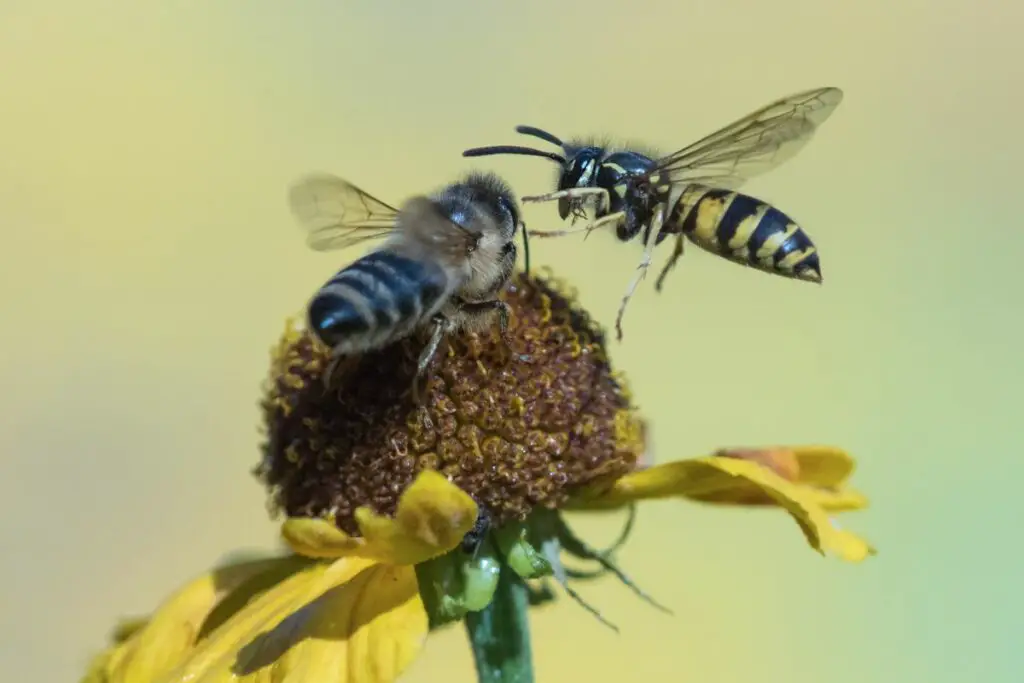
Social bees are just as much a threat to wasps as their kind.
While yellowjackets may be larger and more powerful, sheer numbers of honey bees can quickly overwhelm wasps.
A Japanese bee called the Buddha Bee has developed a way of killing the largest wasps, the hornet.
Using their numbers, they surround their victim in a giant ball of bees.
By vibrating and flapping their wings in unison, they create heat centred directly on the trapped hornet.
Slowly but surely, they begin to cook the intruder alive, sacrificing a few to save the many.
*More reading – Buzz over to our deep dive into do wasps kill bees to learn about one of nature’s most interesting rivalries.

